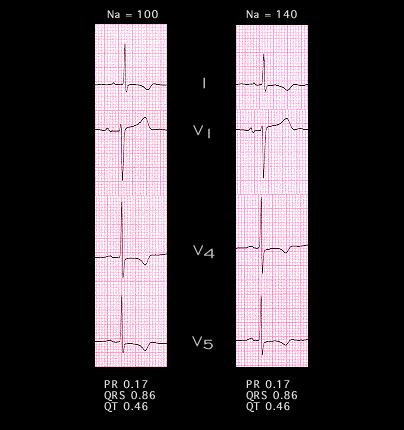
The ECGs from which these leads were taken are from the same patient, recorded on two successive days. The tracing on the left was recorded when the serum sodium was 100 mM. The tracing on the right was recorded the next day when the serum sodium was 140 mM. There were no other electrolyte abnormalities. There are no differences in the two tracings. The QRS duration is 0.86 seconds in both.
